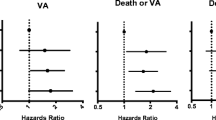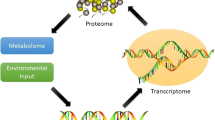Abstract
Soluble ST2 (sST2) is the expression of a pathogenic process related to adverse remodeling that ultimately leads to increased mortality in heart failure (HF). Risk score models provide a comprehensive approach for mortality prediction, beyond the use of biomarkers alone. The objective was to determine the additional value of sST2 and two well-validated contemporary risk scores, BCN-Bio-HF and MAGGIC-HF, in predicting mortality and readmission in the acute setting. This prospective study included 129 patients (mean age 75 ± 9 years; 52% males) after an urgent HF visit. Baseline sST2 levels were measured and the two risk scores were calculated. The primary endpoint was all-cause mortality, and the secondary endpoint was HF readmissions. The follow-up period was 3.6 ± 1.9 years. Patients who died (46%) had higher sST2 concentrations (80.5 vs. 42.7 ng/ml; p < 0.001). The BCN-Bio-HF calculator with sST2 demonstrated the best discriminative ability for mortality prediction (area under the ROC curve: 0.792; p < 0.001). In multivariate analysis for each risk score, the MAGGIC-HF score retained its predictive value only in the model without sST2 (3-year risk: HR = 1.036; 95% CI 1.019–1.054; p < 0.001). However, the BCN-Bio-HF score maintained its prognostic value with sST2 (HR = 1.032; 95%CI 1.020–1.044; p < 0.001), as well as without sST2 (HR = 1.035; 95% CI 1.021–1.049; p < 0.001). sST2 was not associated with readmission, and only the BCN-Bio-HF risk of HF hospitalization showed independent predictive value (OR = 1.040; 95% CI 1.005–1.076; p = 0.023). For predicting long-term mortality in HF in the emergency department, the BCN-Bio-HF calculator with sST2 demonstrated superior discrimination and allows estimation of the risk of HF hospitalizations.




Similar content being viewed by others
Data availability
Anonymized data analyzed during the current study can be available from the corresponding author on reasonable request.
Abbreviations
- BCN-Bio-HF:
-
Barcelona Bio-Heart Failure
- ED:
-
Emergency department
- HF:
-
Heart failure
- CCI:
-
Charlson comorbidity index
- MAGGIC-HF:
-
Meta-Analysis Global Group in Chronic Heart Failure
- sST2:
-
Soluble ST2
References
Ponikowski P, Anker SD, AlHabib KF, Cowie MR, Force TL, Hu S, Jaarsma T, Krum H, Rastogi V, Rohde LE, Samal UC, Shimokawa H, Budi Siswanto B, Sliwa K, Filippatos G (2014) Heart failure: preventing disease and death worldwide. ESC Heart Failure 1:4–25
Weintraub NL, Collins SP, Pang PS, Levy PD, Anderson AS, Arslanian-Engoren C, Gibler WB, McCord JK, Parshall MB, Francis GS, Gheorghiade M (2010) Acute heart failure syndromes: emergency department presentation, treatment, and disposition: current approaches and future aims. Circulation 122:1975–1996
Meijers WC, Bayes-Genis A, Mebazaa A, Bauersachs J, Cleland JGF, Coats AJS, Januzzi JL, Maisel AS, McDonald K, Mueller T, Richards AM, Seferovic P, Mueller C, de Boer RA (2021) Circulating heart failure biomarkers beyond natriuretic peptides: review. Eur J Heart Fail 23:1610–1632
Mueller T, Jaffe AS (2015) Soluble ST2—analytical considerations. Am J Cardiol 115:8B-21B
Pascual-Figal D, Januzzi JL (2015) The biology of ST2: the international ST2 consensus panel. Am J Cardiol 115:3B-7B
Park S, Kim IC, Kim H, Cho YK, Lee CH, Hur SH (2022) Ability of soluble ST2 to predict left ventricular remodeling in patients with acute coronary syndrome. Heart Vessels 37:173–183
Alba AC, Agoritsas T, Jankowski M, Courvoisier D, Walter SD, Guyatt GH, Ross HJ (2013) Risk prediction models for mortality in ambulatory patients with heart failure: a systematic review. Circ Heart Fail 6:881–889
Pocock SJ, Ariti CA, McMurray JJ, Maggioni A, Køber L, Squire IB, Swedberg K, Dobson J, Poppe KK, Whalley GA, Doughty RN (2013) Predicting survival in heart failure: a risk score based on 39 372 patients from 30 studies. Eur Heart J 34:1404–1413
Canepa M, Fonseca C, Chioncel O, Laroche C, Crespo-Leiro MG, Coats AJS, Mebazaa A, Piepoli MF, Tavazzi L, Maggioni AP (2018) Performance of Prognostic Risk Scores in Chronic Heart Failure Patients Enrolled in the European Society of Cardiology Heart Failure Long-Term Registry. JACC Heart Fail 6:452–462
Lupón J, de Antonio M, Vila J, Peñafiel J, Galán A, Zamora E, Urrutia A, Bayes-Genis A (2014) Development of a novel heart failure risk tool: the Barcelona Bio-Heart Failure risk calculator (BCN Bio-HF calculator). PLoS ONE 9:e85466
Codina P, Lupón J, Borrellas A, Spitaleri G, Cediel G, Domingo M, Simpson J, Levy WC, Santiago-Vacas E, Zamora E, Buchaca D, Subirana I, Santesmases J, Diez-Quevedo C, Troya MI, Boldo M, Altmir S, Alonso N, González B, Rivas C, Nuñez J, McMurray J, Bayes-Genis A (2021) Head-to-head comparison of contemporary heart failure risk scores. Eur J Heart Fail 23:2035–2044
Ponikowski P, Voors AA, Anker SD, Bueno H, Cleland JGF, Coats AJS, Falk V, González-Juanatey JR, Harjola VP, Jankowska EA, Jessup M, Linde C, Nihoyannopoulos P, Parissis JT, Pieske B, Riley JP, Rosano GMC, Ruilope LM, Ruschitzka F, Rutten FH, van der Meer P (2016) 2016 ESC Guidelines for the diagnosis and treatment of acute and chronic heart failure. Eur Heart J 37:2129–2200
Dieplinger B, Egger M, Gegenhuber A, Haltmayer M, Mueller T (2015) Analytical and clinical evaluation of a rapid quantitative lateral flow immunoassay for measurement of soluble ST2 in human plasma. Clin Chim Acta 451:310–315
Charlson ME, Pompei P, Ales KL, MacKenzie CR (1987) A new method of classifying prognostic comorbidity in longitudinal studies: development and validation. J Chronic Dis 40:373–383
McCarthy CP, Januzzi JL Jr (2018) Soluble ST2 in Heart Failure. Heart Fail Clin 14:41–48
Januzzi JL, Peacock WF, Maisel AS, Chae CU, Jesse RL, Baggish AL, O´Donoghue M, Sakhuja R, Chen AA, van Kimmenade RR, Lewandrowsky KB, Lloyd-Jones DM, Wu AH (2007) Measurement of the interleukin family member ST2 in patients with acute dyspnea: Results from the PRIDE (Pro-Brain Natriuretic Peptide Investigation of Dyspnea in the Emergency Department) study. J Am Coll Cardiol 50:607–613
Emdin M, Aimo A, Vergaro G, Bayes-Genis A, Lupón J, Latini R, Meessen J, Anand IS, Cohn JN, Gravning J, Gullestad L, Broch K, Ueland T, Nymo SH, Brunner-La Rocca HP, de Boer RA, Gaggin HK, Ripoli A, Passino C, Januzzi JL Jr (2018) sST2 predicts outcome in chronic heart failure beyond NT-proBNP and high-sensitivity troponin T. J Am Coll Cardiol 72:2309–2320
van Vark LC, Lesman-Leegte I, Baart SJ, Postmus D, Pinto YM, Orsel JG, Westenbrink BD, Brunner-la Roca HP, van Mitenburg AJM, Boersma E, Hillege HL, Akkerhuis AJ (2017) Prognostic value of serial ST2 measurements in patients with acute heart failure. J Am Coll Cardiol 70:2378–2388
Yancy CW, Jessup M, Bozkurt B, Casey DE Jr, Colvin MM, Drazner MH, Filippatos GS, Fonarow GC, Givertz MM, Hollenberg SM, Lindenfeld J, Masoudi FA, McBride PE, Peterson PN, Stevenson LW, Westlake C (2017) 2017 ACC/AHA/HFSA focused update of the 2013 ACCF/AHA guideline for the management of heart failure. J Am Coll Cardiol 70:776–803
McDonagh TA, Metra M, Adamo M, Gardner RS, Baumbach A, Böhm M, Burri H, Butler J, Čelutkienė J, Chioncel O, Cleland JGF, Coats AJS, Crespo-Leiro MG, Farmakis D, Gilard M, Heymans S, Hoes AW, Jaarsma T, Jankowska EA, Lainscak M, Lam CSP, Lyon AR, McMurray JJV, Mebazaa A, Mindham R, Muneretto C, Piepoli MF, Price S, Rosano GMC, Ruschitzka F, Skibelund AK (2021) 2021 ESC guidelines for the diagnosis and treatment of acute and chronic heart failure. Eur Heart J 42:3599–3726
Aimo A, Vergaro G, Ripoli A, Bayes-Genis A, Pascual Figal DA, de Boer RA, Lassus J, Mebazaa A, Gayat E, Breidthardt T, Sabti Z, Mueller C, Brunner-La Rocca HP, Tang WH, Grodin JL, Zhang Y, Bettencourt P, Maisel AS, Passino C, Januzzi JL, Emdin M (2017) Meta-analysis of soluble suppression of tumorigenicity-2 and prognosis in acute heart failure. JACC Heart Fail 5:287–296
Berg DD, Jhund PS, Docherty KF, Murphy SA, Verma S, Inzucchi SE, Kosiborod MN, Langkilde AM, Martinez FA, Bengtsson O, Ponikowski P, Sjöstrand M, Solomon SD, McMurray JJV, Sabatine MS (2021) Time to clinical benefit of dapagliflozin and significance of prior heart failure hospitalization in patients with heart failure with reduced ejection fraction. JAMA Cardiol 6:499–507
Tomasoni D, Adamo M, Anker MS, von Haehling S, Coats AJS, Metra M (2020) Heart failure in the last year: progress and perspective. ESC Heart Fail 7:3505–3530
Codina P, Zamora E, Bayes-Genis A (2023) Reply to “The frail patient and the frailing heart.” Eur J Heart Fail 25:441–442
Wessman T, Tofik R, Ruge T, Melander O (2022) Associations between biomarkers of multimorbidity burden and mortality risk among patients with acute dyspnea. Intern Emerg Med 17:559–567
Setoguchi S, Stevenson LW, Schneeweiss S (2007) Repeated hospitalizations predict mortality in the community population with heart failure. Am Heart J 154:260–266
Anand IS, Rector TS, Kuskowski M, Snider J, Cohn JN (2014) Prognostic value of soluble ST2 in the valsartan heart failure trial. Circ Heart Fail 7:418–426
Böhm M, Komajda M, Borer JS, Ford I, Maack C, Tavazzi L, Moyne A, Swedberg K (2018) Duration of chronic heart failure affects outcomes with preserved effects of heart rate reduction with ivabradine: findings from SHIFT. Eur J Heart Fail 20:373–381
Núñez J, de la Espriella R, Rossignol P, Voors AA, Mullens W, Metra M, Chioncel O, Januzzi JL, Mueller C, Richards AM, de Boer RA, Thum T, Arfsten H, González A, Abdelhamid M, Adamopoulos S, Anker SD, Gal TB, Biegus J, Cohen-Solal A, Böhm M, Emdin M, Jankowska EA, Gustafsson F, Hill L, Jaarsma T, Jhund PS, Lopatin Y, Lund LH, Milicic D, Moura B, Piepoli MF, Ponikowski P, Rakisheva A, Ristic A, Savarese G, Tocchetti CG, Van Linthout S, Volterrani M, Seferovic P, Rosano G, Coats AJS, Bayes-Genis A (2022) Congestion in heart failure: a circulating biomarker-based perspective. A review from the biomarkers working group of the heart failure association, european society of cardiology. Eur J Heart Fail 24:1751–1766
Funding
This research received a grant from the Gerencia Regional de Salud de Castilla y León [grant number GRS 1077/A/15].
Author information
Authors and Affiliations
Corresponding author
Ethics declarations
Conflict of interest
The authors declare that the research was conducted in the absence of any financial or non-financial relationships that could be construed as a potential conflict of interest.
Additional information
Publisher's Note
Springer Nature remains neutral with regard to jurisdictional claims in published maps and institutional affiliations.
Rights and permissions
Springer Nature or its licensor (e.g. a society or other partner) holds exclusive rights to this article under a publishing agreement with the author(s) or other rightsholder(s); author self-archiving of the accepted manuscript version of this article is solely governed by the terms of such publishing agreement and applicable law.
About this article
Cite this article
Pérez-Sanz, T.M., Gómez-Salvador, I., Codina, P. et al. Soluble ST2, BCN-Bio-HF calculator and MAGGIC-HF score in long-term risk prediction after an urgent visit for heart failure. Heart Vessels 39, 216–225 (2024). https://doi.org/10.1007/s00380-023-02327-9
Received:
Accepted:
Published:
Issue Date:
DOI: https://doi.org/10.1007/s00380-023-02327-9




